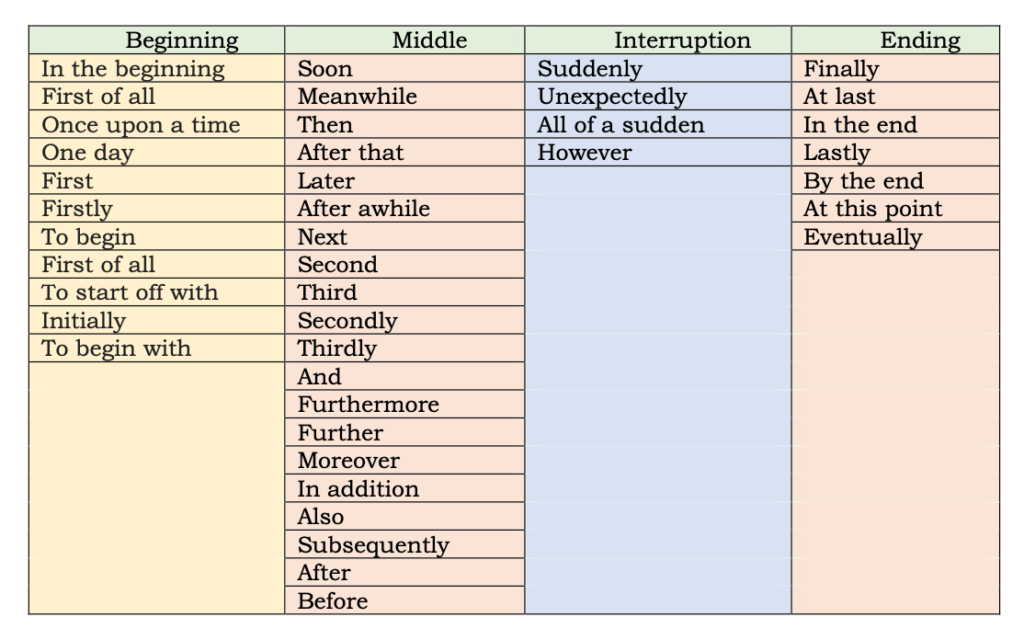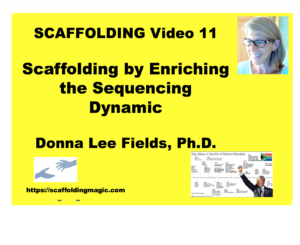You caught a beauty!!!
Download PDF of scaffold here.
theory behind scaffold…
Knowing the sequence of events in a text, story, video, laboratory experiment, sports competition, musical composition, preparation of art materials, etc. is an essential skill for students. This is an integral part of Pre-school and Lower-Primary school lessons, but it is often forgotten in higher grades.
Sequencing is a concept that needs to be repeated throughout the education process. We need to intentionally give our students the opportunities to be able to recognise and express sequences, and we need to provide the phrases they can use to clarify the ordering of events. It might be motivating to know that studies show that students are able to recall information more accurately if they´ve been schooled in sequencing.
The art of ordering is a skill that requires critical thinking as it obligates the students to………………………………………….hippocampus, which is the part of the brain responsible for retaining short-term, long-term and spatial memory. So, the more we give students the opportunity to develop this part of the brain, the more we are aiding them in strengthening neuron connections.
In this scaffold, students have a platform to not only review the concept of sequencing, but also to use creative skills in filling in events that did – or might have – occurred between the given information included in the activity.
………………………………………….. our students are encouraged to develop inferential reasoning. They order events that have happened, and then fill in missing information that is insinuated, or that they imagine happened – through educated inferencing.
Sequencing events in course work involves comprehension strategies that include repetitive sequencing phrases such as: ‘Initially,’ ‘Eventually’, ‘Finally’, etc. If practiced regularly, these phrases automatically trigger a sense of time and order and give students clues as to the trajectory of whatever is being addressed.
This scaffold will show how we can naturally use our course materials – i……………………………………….’In the beginning…’, ‘Next’, ‘In the end…’; however, depending on the lesson you are about to present, you may decide to introduce other phrases. The list below will help you choose.
step by step…
- Choose the information to use in this activity (15-20 images from a text, a video, the instructions to a laboratory experiment, the steps to take to prepare materials in an art class, the notes to a piece of music your students are going to learn, etc. ……………………………………….
- Place the images out of order on ………………………………………..
3. Make the chart below visible and add any other sequencing phrases you’d like your students to use.**

- …………………………………….. can begin the activity by modelling possible conversations students have together.)
- Using student volunteers, model the activity. …………………………………………….
- Formative assessment: Project …………………………………… they’ve been practicing.
- Reflection: ………………………………………….. “to understand peaceful revolution because Gandhi embodied this philosophy. I liked …………………………………..”
- ………………………………….
*Becoming a High Expectations Teacher
Flashcards for more image sequencing
video explanation of scaffold…


Scaffoldingmagic.com is your entryway into DYNAMIC bilingual learning methodologies, such as Phenomenon-Based Learning, CLIL, EMI, and ESL. You’ll find ways to implement critical thinking tools (DOK) to promote higher level thinking, the growth mindset, instill an ethic of excellence, deep reflection on learning, and all through multi-cultural, interdisciplinary activities. We have the keys to turning competences into action and to creating collective efficacy in your school so you move ahead as a unified, enthusiastic team.







Pingback: Alana Richards: A Budding Professional's look back on how her education has affected her career: Bilingual Immersion and the IB Program as critical junctures toward a Global Perspective - Scaffolding Magic